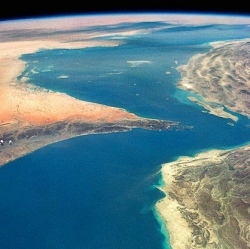
Across the globe, water access depends partly upon atmospheric “rivers,” bands of water vapor propelled along jets of air that trace swirling routes above the Earth. These rivers can change weather conditions in an instant. They drop vast amounts of rain in some places, causing a patchwork of flooding and drought.
The complete network of atmospheric rivers has generally been poorly understood, though previous research has looked at how sections of this river-network affects specific regions. One 2013 paper, for example, found atmospheric rivers were responsible for days of extreme rainfall in Western Europe which cause flooding.
In a new study published in October in Geophysical Research Letters, researchers at NASA’s Jet Propulsion Laboratory attempted to look at the bigger picture by mapping the global network of these aerial streams and the extent of their effect on the planet.
“[W]e have found that, globally, a large number of people are exposed to hazards that stem from atmospheric rivers,” Homero Paltan, who led the NASA study, said. “They have a considerable impact that we’re only beginning to understand and measure.”
Through modeling, NASA found that rainfall from atmospheric rivers make up 22% of all freshwater flows on Earth, affecting everything from snow packs to soil moisture. In some places they’re responsible for far more; in southeast Asia, New Zealand, and the east and west coasts of North America, upwards of 50% of water flows come from atmospheric river activity.
In the places where their influence is strongest, atmospheric rivers increase the likelihood of flooding by 80%, according to the NASA paper. Where they are absent, the incidence of drought may be as much as 90% higher. The researchers estimate that 300 million people annually are exposed to floods and droughts which they wouldn’t have been in the absence of atmospheric rivers.
